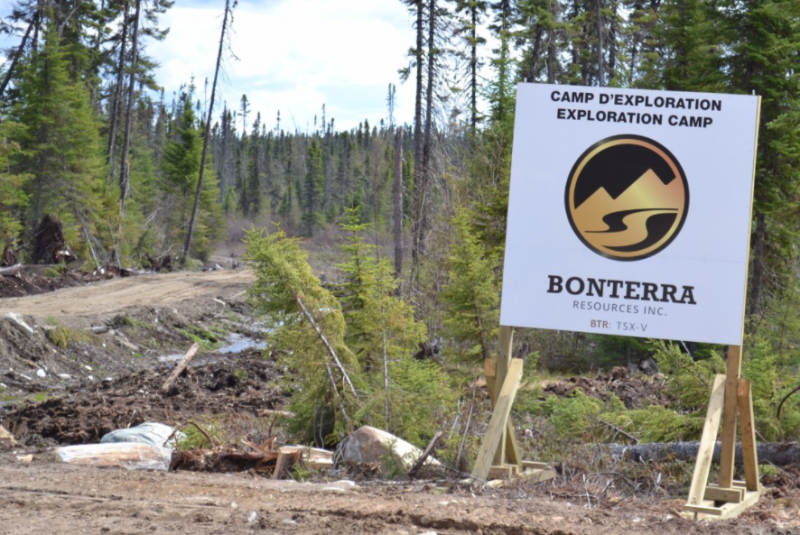
MiningFeeds previously wrote about Bonterra Resources (TSX-V: BTR) and its Gladiator Gold Project in Quebec. The company has steadily advanced through an extensive resource development program expand and define its geological resource model for an updated 43-101 Mineral Resource technical report that will likely prove to be significantly larger than its dated 2012 resource estimate.
In 2012, using a 4 g/t Au cut-off grade and comprised of approximately 15,600 meters of drilling, the Gladiator Gold Deposit contained an inferred resource of 905,000 tonnes, grading 9.37 g/t Au for 273,000 ounces of gold. On average, 90% of operating mines have a grade of less than 8 g/t gold. This ranks Gladiator in the top 10% of the world, when discussing the grade nature of the mineralization. The company has invested significantly since 2015 to expand this resource in the Abitibi Gold Belt, known as one of the world’s most prolific gold belts.
Bonterra has continued to drive shareholder value over the past three years by focusing on putting shareholder dollars in the ground and completing over 100,000 meters since 2016, most recently by continuing drilling through an infill/definition winter camp drill program. Bonterra’s share performance has beat Gold, TSX Venture Index, TSX Index and even the GDXJ Index, which tracks all miners:
Drilling has delivered recent headlines such as:
- Bonterra Continues to Demonstrate Continuity of the Gladiator Gold Deposit Intersecting 16.9 g/t Gold over 6.5 m
- Bonterra Extends Gladiator Gold Deposit Further Westward 17.8 g/t Au Intersected over 3.0 Meters
- Bonterra’s Winter Drill Program Discovers 6th Parallel Gold Zone at the Gladiator Gold Deposit.
- Bonterra Extends Multiple Zones at Gladiator Gold Deposit
This work is part of the company’s 70,000-metre drill program planned for 2018 and has consistently intersected gold mineralization in every hole, and is clearly proving up the company’s deposit in Quebec. There will be more results for an updated resource
Dale Ginn, VP Exploration for Bonterra Resources, stated:
“Initial results from the winter drilling campaign continue to highlight the predictability of the mineralized zones and the validity of the geological model. The positive results from the large diameter drilling will contribute to the success of the preliminary metallurgical work at the deposit. Bonterra continues to successfully execute its aggressive resource development program with seven active drills on site, and five drills at work on the Gladiator Gold Deposit.”
The company is clearly improving its confidence in the resource, and highlighting to the market how predictable the zones have become for targeting drilling to intersect gold mineralization. Another important milestone was to demonstrate that the resource they are drilling has the potential to be economic, which they have done with a recent press release that states the mineralization found at Gladiator is 99% recoverable. By industry standards, their rock is as clean as it gets, and indicates the quality of the deposit in regards to extraction of the gold, and how they stand well above their peers in regards to metallurgical extraction.
Peter Ball, the vice president of operations for Bonterra recently gave an interview to outline these results.
The market is slowly realizing the robust nature of the project, and potential economic nature of the rock when highlighting the high grade resource and metallurgical recovery.
Bonterra is likely pushing towards to a significant re-rate upwards to align with other more advanced peers, and thus the current valuation of the share price represents an opportunity for investors.
——–
Bonterra Resources Inc. (TSX-V: BTR, OTCQX: BONXF, FSE: 9BR1)
Telephone: 1-(844)-233-2034
Email: ir@bonterraresources.com
Website: www.bonterraresources.com

After one of the worst bear markets in history, gold and the gold mining stocks began a new bull market cycle in 2016. With the first 8 months of the year filled with incredible gains, a correction in the market ensued. Of the two, the gold mining stocks were hit the hardest, sending a large portion of the company share prices down or sideways over the last 16 months.
Today, in the 1st quarter of 2018, physical gold continues to show strength, while the gold stocks continue to waiver. Personally, I think the prospects of a change in sentiment toward the gold stocks will happen in 2018, and mark the next leg up in this bull market cycle.
Why do I think this is the case? There are a few reasons:
- Lack of interest – In my opinion, the weed and blockchain sectors have captured the attention of the large majority of the speculative investors over the last year. Additionally, I have read numerous articles and headlines which allude to gold losing its luster, which I completely disagree with. I believe this is a sign of a great buying opportunity in the junior gold equities.
- 1,033 point correction on the DOW – The broader market has been on a tear for roughly 8 years, and up until this 1,033 point correction on the DOW a couple weeks ago, it didn’t appear to be slowing down. It’s my contention that we are seeing an inflection point downwards in the broader markets bull cycle. My guess is that past will be prologue, gold and gold equities will be the major beneficiaries.
- Inflation – Although, I do think a correction in the broader market becomes more likely with each passing week, I see tremendous inflation in the future. In my opinion, we are entering a major bull cycle in the base metals, which will inflate the cost of living. Real assets will be sought out to curb the destructive and silent force which is inflation. The caveat to this belief is the adoption of artificial intelligence, which will have a huge deflationary impact on the world. However, I think that is still 10 years away from having a profound impact.
- Scarcity and Cost to produce an ounce of gold – As Brent Cook has often pointed out, we are losing approximately the equivalent of the Carlin Trend each year, in terms of gold ounces, and the majority of what we do discover isn’t economic below $1250 USD/oz Au. When the cost of production is more than the price of the commodity, therefore, the price has to eventually go up. I must qualify this statement by saying that, according to regular accounting, gold isn’t scarce, given the fact that more than 95% of all gold that has ever been mined still exists today, albeit in vaults. I don’t, however, foresee gold becoming any less popular as a store of value and, therefore, believe that the scarcity reference is applicable.
Mining is a sector in which the most valuable commodity, for a junior company, is the people. The right people make the right choices no matter what portion of the market cycle they are in. Therefore, picking the right people, in my opinion, gives you a higher probability of being successful with your investments. Bottom line, if you like the metal and its prospects for price appreciation in the future, buy the metal. If you’re willing to do the due diligence, and can handle/manage the risk, there is huge potential in the junior mining stocks.
Which brings me to the company I would like to update you on today, Genesis Metals Corp.
Let’s take a look!
Genesis Metals Corporation (GIS:TSXV) & (GGISF: OTC)
NOTE: DTC eligible
MCAP – $9.4 million (at the time of writing)
Shares – 74,801,204
Fully Diluted – 104,845,092
Management Ownership – 12%
The Genesis Metals Team
A junior resource company is only as good as its people, and in the case of Genesis Metals, they’ve assembled a great team.
Genesis Metals’ CEO and Chairman, Brian Groves, is a 40-year veteran of the mining industry. Groves has explored in both Australia and Canada, working with AMAX Minerals, Noranda and Manager of Corporate Development at Placer Dome. Moving up the organizational ladder throughout his career, Groves has gained valuable experience in capital markets, project development, permitting and corporate strategy. Today, he leads a group of people who have not only worked together previously, but who have a history of success within the mining industry.
Working hand in hand with Groves is Jeff Sundar, President and Director of Genesis. Sundar has 18 years of experience in the mining industry, having held a VP and Director’s position while working with other Genesis Board members in Underworld Resources. Underworld, in particular, was a great success, as the 1.6 Moz White Gold deposit was sold to Kinross for $140 million. Sundar and the team look to replicate this success with Genesis in the years ahead.
Adrian Fleming, the former President and CEO of Underworld Resources and former VP Exploration of Placer Dome, joins the Genesis team as an Executive Director. Fleming is a Professional Geologist with over 30 years of experience in the mining industry. Some of Fleming’s most notable work experience includes the following:
- Former VP Exploration for Placer Dome based in Sydney Australia. Fleming spearheaded Placer Dome into Western Australia, where he directed the group and found the Big Bell Mine.
- Fleming co-led the team that found the high grade zone at the monster, 28 Moz gold equivalent, Porgera copper gold deposit, located in Papua New Guinea.
- Former VP Exploration for Golden Star in the early 90’s. Fleming directed the team that uncovered the Gross Rosebel Deposit, which has now grown to 17 Moz of gold.
- Fleming will be counted on to provide valuable input as Genesis moves forward with a plan to expand its Chevrier Gold Deposit resource, and explore the gold anomalies at their October gold project.
John Florek, the former Senior Geologist at Barrick Gold’s Famous Hemlo Mines, is on Genesis’ Board of Directors. Hemlo was a world-class gold deposit and is credited as being the catalyst for the 1980’s exploration boom. Florek co-led the exploration team that found an additional 2 Moz of gold, which extended the Hemlo mine life. He was also Senior District Exploration Geologist for Placer Dome in Red Lake, and in 2008, his team was awarded the Northwestern Ontario Prospectors award. Florek’s more than 20 years of experience in the mining business as a professional geologist should add great value for Genesis in the future.
Last, but certainly not least, Andre Liboiron is the Exploration Manager for Genesis’ projects, Chevrier and October. Liboiron is a Quebec native with more than 26 years of experience as a geologist in Quebec, as well as internationally.
Strategic Advisor
Robert McLeod, Genesis Co-Founder and former Chairman of Genesis’ Board, relinquished his position because of the heavy time commitment required by his primary focus as CEO of IDM Mining, a near term producer in BC’s Golden Triangle. Given the work history of the members of this management team, however, McLeod has agreed to remain with the company as a strategic advisor.
McLeod is on Casey Research’s Nexten list, which features the top young professionals in the mining industry. A quote taken from Casey Research’s profile of McLeod,
“Luck has nothing to do with it. Rob has the pedigree, the smarts, and the perseverance to have forged a stellar career in mining exploration and company development.” ~ Casey Research
Also, Genesis has added former Laurentian Bank Securities Mining Analyst and Peartree Securities Technical Advisor, Eric Lemieux. Lemieux is a geologist by trade and has 25 years in the mining industry with experience in a variety of areas, such as mineral exploration and project valuation. Lemieux’s addition to the Genesis team should prove advantageous as Genesis looks to develop their properties.
Strategic Shareholders
While the people who run junior resource companies are the core component for investment, looking at the people who choose to invest in the companies is a great gauge for potential value. In Genesis’ case, there are a few heavy hitters who have taken major positions in this junior gold exploration company.
The list of strategic shareholders is headlined by Osisko Mining, which acquired a 6.4% position in Genesis through a private placement announced in 2017. For those unfamiliar with Osisko Mining, they’re a major player in the gold sector, owning strategic positions in a lot of great companies, such as: Falco Resources, IDM Mining and Beaufield Resources. Outside of owning strategic positions in companies, Osisko is exploring their 70,000 Ha Windfall property, which is located in the Urban-Barry Greenstone Belt in Quebec. Osisko is known for their geological expertise and well timed investment in smaller junior gold companies. Their investment in Genesis speaks volumes about Genesis’ potential.
The strategic shareholders list is further headlined by Eric Sprott, who has acquired a 7.2% position in Genesis through a private placement announced in 2017. Sprott is a major player in the resource sector, with a history of successful investments throughout his career. Also, Sprott has multiple Sprott named companies offering various market related products across the sector. Over the last few years, he has taken strategic positions in a few junior gold companies such as Kirkland Lake Gold. Sprott’s investment, like Osisko’s, is a great gauge for potential value in Genesis.
For those who aren’t familiar, the Societé de development de la Baie-James (SDBJ) is a government run organization focused on the development of natural resource projects within Québec. Their mission statement is as follows;
“To promote the economic development, development and exploitation of natural resources, other than hydroelectric resources within the mandate of Hydro-Québec, of the James Bay territory, from a sustainable development perspective. In particular, it may encourage, support and participate in projects aimed at these ends.” ~SDBJ
Additionally, the SIDEX fund, which was created by the government of Québec to support mineral exploration activities within its borders, participated in the latest financing. Having both SDBJ and SIDEX as stakeholders in Genesis is a great sign of political support for Genesis’ Chevrier Gold Project. The strategic shareholders list is rounded out by Delbrook Capital, Gold 2000, US Global Investors and Medalist Capital. These organizations and people represent smart money in the sector and I’m happy to speculate along with them.
6th Best Jurisdiction for Mining Investment in the World
From a jurisdictional standpoint, it doesn’t get much better than Quebec when it comes to mining investment attractiveness. The Fraser Institute (FI) gives Quebec an index score of 85.02, ranking it 3rd in Canada and 6th in the world. FI’s mining investment attractiveness index score is reflective of both the mineral potential and the government policy perception of the region.
Source: Fraser Institute
Quebec’s Mineral Potential
Quebec is home to 25 producing mines and over 350 surface mineral mining operations, putting the value of Quebec’s mineral shipments at $8.7 billion in 2014 (Investissement Quebec). Quebec is Canada’s 2nd largest producer of gold, largest producer of iron and zinc, and the only North American producer of niobium. The mineral wealth is evident and is a big reason why FI ranks Quebec among the world’s top ten in mining investment attractiveness.
Highlighting Quebec’s world class mineralization is the Abitibi Greenstone Belt (AGB), which is 150 km wide and stretches 650 km from roughly Wawa, Ontario to Val d’Or, Quebec. The belt has produced millions of ounces of gold over its history, with the Cadillac Gold Camp, Virginiatown, Rouyn-Noranda Gold Camp, and Val d’Or Gold Camp being just a few of its largest contributors.
Source: Genesis Metals
Quebec Politics and Infrastructure
The government of Quebec supports mineral exploration within its borders with a tax credit system that refunds 25% of eligible exploration expenses for non-operating corporations, and 10% of eligible exploration expenses for operating corporations (Financial Incentives). So, roughly, for every $1 spent by a Quebec based mineral explorer, 25 cents will come back to the company, which can effectively be rolled right back into further exploration work. This is not only a huge plus for the company and its shareholders, but an ingenious way for the province to promote mineral exploration.
The long history of mining in the AGB means that most regions of the belt are accessible or near infrastructure such as highways, rail, power, and deep water ports along the St. Lawrence Seaway. Also, Quebec boasts some of the most competitive electricity rates in Canada, as its hydroelectric dams constitute a major portion of its electricity production.
Finally, Quebec takes great pride in a transparent mining system, which is built around three key pillars:
“Open access to resources is ensured on the largest possible portion of territory, Mineral rights are granted on a first-come, first-served basis and if a discovery is made, the title holder can be reasonably sure of obtaining the right to develop the resource.” ~ Investissement Quebec
Favourable politics and world class geology – for me, it doesn’t get much better than Quebec, as far as your investment buck goes!
Gensis Metals Corp. – Chevrier Gold Project Phase 1 and 2 Drill Update
Genesis’ 100% owned Chevrier Gold Project encompasses 120 square km and is located 35 km south of Chibougamau, Quebec, in the heart of the Abitibi Greenstone Belt. Chevrier straddles 15 km of the Fancamp deformation zone, and is 15 km northeast of IAMGOLD’s high-grade Monster Lake gold discovery.
Chevrier has an existing NI 43-101 inferred resource for its Main Zone, which is 300,000 oz of gold at 1.99 g/t (1 g/t cut-off), and is open for further expansion at depth and to the north.
Phase 1 Drilling
Roughly 5,000 metres of drilling was completed in Phase 1 at Chevrier. The focus of the drilling was four fold; confirm historical Geonova drill holes by twinning, complete infill and step out drilling on the existing Main Zone Deposit, and finally, explore other IP and geological targets.
The results of the twinned and infill holes did not disappoint, as they confirm continuity of the shallow gold mineralization within Chevrier’s Main Zone. A full list of drill results can be found on SEDAR, a few of the highlights from the results are:
- Twinned hole GM17-09 returned 2.94 g/t gold (Au) over a width of 58.70 m (starting at 74.60 m down hole), which included an interval of 14.01 g/t over a width of 6.35 m.
- Hole GM17-20 returned 2.00 g/t Au over 35.20 m within a zone that graded 0.93 g/t Au over 94.90m starting at 91.5 m down hole.
- Hole GM17-21 returned 1.13 g/t Au over 38.05 m.
- Hole GM17-22 returned 1.06 g/t Au over 24.45 m.
- Hole GM17-16 returned 1.06 g/t Au over 14.22 m including: 3.50 g/t Au over 3.22 m.
Using the image below to reference the highlighted holes:
Chevrier Gold Project – 2017 Drilling
Trenching
The IP survey of the property identified a geophysical anomaly roughly 5 km northeast of the Chevrier Main Zone. During the Phase 1 drill program, Genesis completed exploration of this anomaly via trenching. In a news release on October 3rd, 2017, Genesis reported that they had identified a new area of gold mineralization in Trench 29, returning a channel sample of 2.55 g/t Au over 2.3 m. This area will be explored further in the future.
Phase 2 Drilling
On January 22, 2018 Genesis announced the results of its 5,000 metre Phase 2 drill program on the Chevrier Gold Project. The Main Zone was the focus of Phase 2, completing 18 holes of infill and step-out drilling. The results, in my opinion, look good. Check out highlights from the drill program:
- 8.73 g/t Au over 21.35 m including 37.97 g/t Au over 3.00 m in hole GM-17-42
- 3.59 g/t Au over 22.60 m in a separate zone in hole GM-17-42
- 4.26 g/t Au over 19.40 m including 8.99 g/t Au over 7.80 m in hole GM-17-48
- 4.47 g/t Au over 12.45 m within an interval of 1.08 g/t Au over 84.85 m in hole GM-17-46
- 5.06 g/t Au over 8.45 m and 1.23 g/t Au over 43.00 m in two intervals in hole GM-17-41
- 4.53 g/t Au over 13.80 m in hole GM-17-44
- 1.04 g/t Au over 50.05 m including 1.94 g/t Au over 17.10 m in hole GM-17-44
Putting the results into perspective, remember that the Main Zone’s existing inferred resource has an average grade of 1.99 g/t. The impact of these shallow, higher grade results should be realized in Genesis’ resource update for the project coming later this year.
Additionally, and of particular importance, was the step-out results which came from holes GM-17-45 and GM-17-46. These holes were drilled with the intent of testing for an extension of the mineralization from hole GM-17-09, which was drilled in Phase 1 (refer to the image above for the location).
The results from these two holes reveal a new north-east trending shallow extension of the mineralization discovered in GM-17-09. Specifically, from the drill results table in the news release , GM-17-45 returned a shallow interval (35.4 m down hole) of 63 metres at 0.5 g/t gold, while GM-17-46 returned a shallow interval (19.35 m down hole) of 84.85 metres of 1.08 g/t gold.
PUSH: Announcement of follow up drill program on the Main Zone, focusing on the high grade holes which were discovered in 2017.
PUSH: Chevrier Gold Project resource estimate update in 2018.
Chevrier South Zone
While Chevrier’s Main Zone, with its existing Inferred Resource, has garnered the bulk of drilling over the history of the Project, I believe there’s the possibility of some great results from Chevrier’s South Zone. Why? Although the South Zone doesn’t have an existing 43-101 resource, Met-Chem’s comments within the technical report state,
“the Chevrier South deposit contains a potential between 8.5 and 9.0 million tons of mineralized material grading 1.8 to 2.2 g/t Au.” ~ Met-Chem – 43-101 Technical Report on the Mineral Resource of the Chevrier Gold Project – pg.93
If you express the 8.5 million tons of mineralized material at 1.8 g/ton, you get 459,000 ounces of gold. Met-Chem’s reference to the possible resource size of the South Zone deposit is based off a small historical drill data set and its similarities in alteration and deformation like the Main Zone. The fact is, the South Zone needs further drilling before a 43-101 complaint resource can be officially estimated.
As Genesis intends to update the Chevrier Gold Project resource estimate in 2018, I believe there’s a good chance that we could see them refocus their attention on the Project’s South Zone. Given Met-Chem’s comments, I believe there’s good reason to believe drilling within the South Zone could have a tremendous impact on the updated resource estimate for the entire Project.
In my opinion, the updated resource on the Chevrier Gold Project, which will include both the Main and South Zones, will exceed 1 million ounces and should set Genesis up for a market re-rating, as its current sub $10 million MCAP doesn’t reflect the potential of what it possess.
PUSH: Watch for the announcement of a drill program on Chevrier‘s South Zone. The results from a South Zone drill program could have a major impact on Chevrier’s updated overall resource estimate.
October Gold Project
Genesis also owns 100% of the 203 square km October Gold Project, located in the southern Swayze greenstone belt in Benton Township, Ontario. This project is located 35 km northwest of IAMGOLD’s Cote Lake deposit, and 50 km southeast of Goldcorp’s Borden Gold Deposit. The Cote Lake Deposit was purchased by IAMGOLD from Trelawney Mining for $585 million, while the Borden Gold Deposit was purchased by Goldcorp from Probe Mines for $526 million. This demonstrates how coveted this Ridout Deformation Zone is, and Genesis’ October Gold Project is right in the middle, and on trend.
IAMGOLD announced in a press release on June 5, 2017 that Sumitomo Metal Mining has acquired a 30% undivided participating joint venture interest in IAMGOLD’s ownership interest in the Cote Gold Project for an aggregate $195 million. Sumitomo’s interest in this area of Northern Ontario should bring more attention to the surrounding land claim owners, one of which is Genesis’ October Gold Project.
The October Gold Project straddles what is considered the western extension of the Larder Lake-Cadillac Deformation and a portion of the Ridout Deformation zone. Historic gold deposits on these deformations, Kirkland Lake and Kerr Addison-Chesterville, have historic gold production north of 49 Moz.
The October Gold property saw surface exploration work in 2011. The program comprised of Soil Gas Hydrocarbon (SGH) sampling and reconnaissance level gravity geophysical surveys.
“A SGH survey is a deep penetrating geochemical method that involves the analysis of various hydrocarbons associated with ore bodies at depth using a forensic and comparative approach for Identification. “ ~ Genesis
The program has identified two gold anomalies, which Actlabs, the interpreting laboratory, says have a high degree of confidence. This confidence is based on comparisons with other surveys that Actlabs has completed on other gold deposits. These anomalies will see future surface work which should better define where the diamond drilling should take place.
The October Gold project property is early stage, but holds very promising gold exploration potential.
Concluding Remarks
The Genesis Metals story is not without risk, as any gold exploration company runs the risk of not finding anything or not finding mineralization which is economic. In Genesis’ case, I believe further modelling of the gold grade distribution within the Main Zone, should feed nicely into Chevrier’s updated resource estimate later this year. While on the exploration side, drilling on Chevrier’s South Zone appears to be very promising.
Outside of the risk of exploration, Genesis has some compelling facts that make their story undervalued in comparison to the paltry sub $10 million MCAP that they currently possess, including:
- A proven management team: Groves, Sundar, Fleming, Florek, Liboiron and Mcleod
- Strategic Shareholders List Headlined by: Osisko Mining, Eric Sprott, Delbrook Capital, Gold 2000, US Global Investors, SIDEX/SDBJ and Medalist Capital
- Located in the 6th best jurisdiction in the world, Quebec
- PUSH: Announcement of a follow up drill program, focused on Chevrier’s Main Zone high grade drill holes, which were discovered in 2017.
- PUSH: Announcement of a drill program focused on Chevrier’s South Zone in 2018.
- PUSH: 2018 Chevrier Gold Project Resource Estimate Update – In my opinion this estimate could exceed 1 million ounces of gold.
- Great bang for their drilling buck, as their all-in drill costs thus far have roughly averaged $220 per metre
- Large land package with exploration potential, Chevrier Gold Project and October Gold Project
The next leg of the gold bull market is upon us, fortunes will be made in the coming years by buying right and sitting tight, investing in companies that look to add value for their shareholders. Genesis Metals (GIS:TSXV) is a great example of this and is a company in which I’m investing.
Don’t want to miss a new investment idea, interview or financial product review? Become a Junior Stock Review VIP now – it’s FREE!
Until next time,
Brian Leni P.Eng
Founder – Junior Stock Review
Disclaimer: The following is not an investment recommendation, it is an investment idea. I am not a certified investment professional, nor do I know you and your individual investment needs. Please perform your own due diligence to decide whether this is a company and sector that is best suited for your personal investment criteria. I do own Genesis Metals Corporation stock. All Genesis Metals Corporation analytics were taken from their website and press release. Genesis Metals Corporation is a Sponsor of Junior Stock Review.
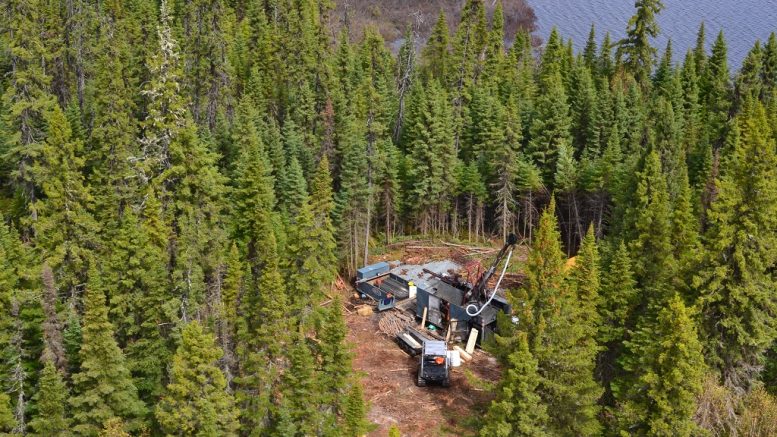
by: Northern Miner Staff Writer, SEPTEMBER 27, 2017
The geological model Bonterra Resources (TSX-Venture: BTR) is applying to its Gladiator gold project in the Abitibi belt of Quebec is proving to be a reliable predictor of where extensions of the already substantial deposit will appear.
As a result, the Vancouver-based company has been able to quickly expand the known gold mineralization along strike and at depth and is finding multiple new mineralized horizons within the 105 square kilometre land package.
“We let the deposit do the talking,” says Dale Ginn, Bonterra’s Vice-President of Exploration. “It’s a classic stacked vein system that responds well to a combination of till sampling, magnetics, and LIDAR (remote sensing using lasers).”

Location map of Bonterra Resources’ gold projects in the Abitibi gold belt of Ontario and Quebec. Credit: Bonterra Resources.

An ownership map outlining Bonterra Resources’ Gladiator gold property and surrounding area in Quebec. Credit: Bonterra Resources.
The Gladiator gold deposit occurs within highly silicified, altered and sheared mafic volcanics, with local intrusions of syenite and quartz porphyry. Smoky quartz veins contain most of the mineralization including free gold, minor pyrite, chalcopyrite and sphalerite, especially in or near the vein contacts.
In 2012 Snowden Mining Industry Consultants identified an inferred resource of 905,000 tonnes grading 9.37 grams gold per tonne (273,000 contained oz.) within a relatively small deposit.
Since then, Bonterra has extended mineralization to a strike length of 1,200 metres and a depth of 1,000 metres below surface. The deposit remains open in all directions and drilling has identified at least five distinct sub-parallel zones.

A gold-rich core sample from Bonterra Resources’ Gladiator gold project in Quebec. Credit: Bonterra Resources.
The Abitibi greenstone belt straddling the mining-friendly jurisdictions of Ontario and Quebec is receiving a great deal of attention these days because of its potential to host more gold deposits such as Gladiator within an already prolific camp with excellent infrastructure. A relatively high gold price, at roughly US$1,300 per oz., is an added incentive.
The Urban-Barry sub-belt that hosts the Gladiator deposit is an underexplored section of the Abitibi. Encouraged by progress at Gladiator, Bonterra has more than doubled its land position along the northeast trending shear structure and its exploration team is consistently intersecting high-grade zones at mineable widths with step out drilling.
“Bonterra has found a new high-grade deposit that looks like it will have some size and that’s a very rare thing, especially within a jurisdiction that is open for business,” says Ginn, an experienced geologist and mine executive who has participated in several gold and base metal discoveries. “Every single drill hole is adding ounces and the mineralization is becoming predictable.”
High profile investors have taken note. In March, Kinross Gold (TSX: K; NYSE: KGC) purchased a 9.5% stake in the company for $5.2 million. Other major shareholders include Eric Sprott, Kirkland Lake Gold (TSX: KL; NYSE: KL) and New York-based Van Eck. Their confidence in the junior has had a domino affect, allowing Bonterra to raise another $35 million through two oversubscribed bought deal financings and one private placement.
As a result of the recent deals, Bonterra now has about 162 million shares outstanding and a market capitalization of $65 million. Shares have been trading in a 52-week range of 21-55 cents with recent trades closer to 40 cents.
With exploration financing secured, Bonterra will ramp up its drill program at Gladiator, adding two drills to the four already turning. Some of the work will focus on infill drilling in preparation for an updated National Instrument 43-101 resource estimation in the first half of 2018. The rest will test exploration targets identified along the company’s extensive land package.
If Bonterra continues to demonstrate continuity in the 800 metre long gap (the “Rivage Gap”) between the Rivage Zone — once thought to be a distinct, separate deposit to the west — and Gladiator, resources would increase significantly from the 273,000 ounces identified by Snowden. Recent drill results within the gap include 3.8 metres grading 16.8 gpt and three metres grading 21.5 gpt gold.
Bonterra also has a 100% stake in the Larder Lake project in the Abitibi belt, acquired in 2016 for $4 million in cash and shares, or approximately $4 per ounce of gold in historical resources. The property hosts the Bear Lake, Cheminis and Fernland deposits that occur along 10 kilometres of the Cadillac-Larder break between Kirkland Lake and Virginiatown in Ontario.
Various groups have drilled more than 100,000 metres at Bear Lake over the years and the deposit remains open at depth. It has two shafts and mine development extends to a depth of 330 metres. With access to such an extensive database for modelling, Bonterra intends to conduct a thorough geological review of the historical data and conduct further exploration based on the results.
But for now, all eyes are focused on Gladiator, where an aggressive drilling program is confirming and adding ounces to a gold deposit that drew the attention of sophisticated investors early on and continues to reward them.
— The preceding Joint Venture Article is promoted content sponsored by Bonterra Resources Inc. and written in conjunction with The Northern Miner. Visit bonterraresources.com to learn more
— Bonterra is an advertiser with MiningFeeds.com. MiningFeeds was compensated in cash for marketing services. This article was published with permission from management at Bonterra Resources.

Sitting in one of the most prolific mining camps, there is a company that has been aggressively expanding its resources through good times and bad. Now with renewed interest in gold mining projects, it is time to look at teams and resources that have weathered the storm and learned discipline to advance their project with current drilling underway.
Bonterra Resources Inc. (BTR: TSX-V) ( BONXF: US) (9BR:FSE) is one such company that exemplifies determination and dedication to their deposit. Bonterra is a Canadian gold exploration company focused on expanding its NI 43-101 compliant gold resource on its properties in the Abitibi Greenstone Belt in the mining-friendly jurisdiction of Quebec.
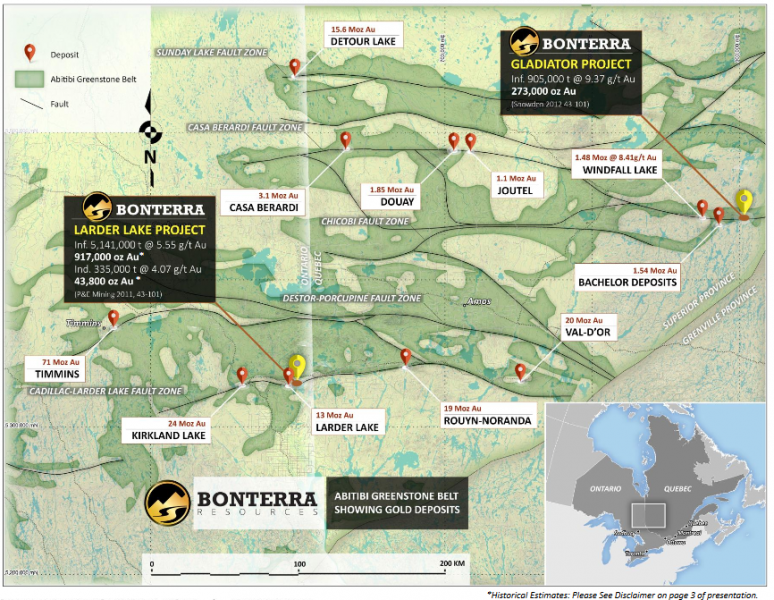
The company is currently drilling at its 10,541-hectare Gladiator Project. The drill program comprises over 50,000 meters utilizing a minimum of four drill rigs. Using a 4 g/t Au cut-off grade, the project currently contains an inferred resource of 905,000 tonnes, grading 9.37 g/t Au for 273,000 ounces of gold according to a Mineral Resource Estimate and technical report filed July 27, 2012, prepared by Snowden Mining Consultants. The company plans on completing 70,000 metres of drilling this year. With this drilling, expect the resource to expand when the company puts out its updated NI 43-101 Mineral Resource Estimate in mid-2018
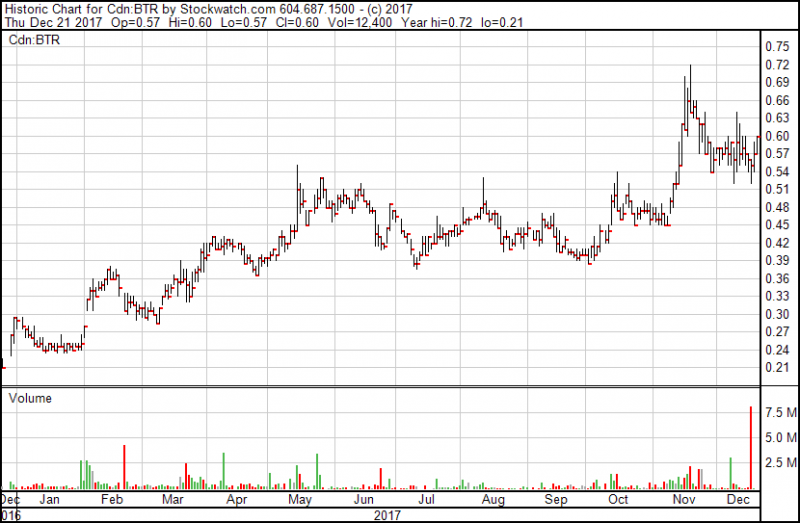
Recent drilling from Gladiator has impressed the market by reaching a year high of 72 cents. On Dec. 12, 2017, the company released drill results of 18.5 g/t Au over 4.0 m and 11.9 g/t Au over 3.2 m in the south zone which increased and further defined the size of the high-grade core area. Holes BA-17-42A and BA-17-48 improved the definition of the high-grade core of the footwall zone, with significant grade and width in hole BA-17-48, which intersected 10.1 g/t Au over 6.3 m. Holes BA-17-42, BA-17-43B and BA-17-46 confirmed the eastern continuity of the north zone, with an intersection of 9.6 g/t Au over 3.0 m. This recent drilling also extends the north zone down plunge to the east. Results from these seven recent drill holes have expanded the size and demonstrate the continuity of the north, footwall and south zones.
According to Dale Ginn, vice-president of exploration: “Drill results from Gladiator continue to demonstrate superior widths and grades in all five of our defined zones to date. These mineralized zones are not only visible with sharp contacts, but are continuous and highly predictable. Stand-alone high-grade gold deposits in Canada, especially with extensive infrastructure and easy access, are extremely rare and valuable and we look forward to demonstrating that Gladiator is among that class.”
The company can follow up on these results year round and access some of the more difficult ground with the recent upgrade to its camp to an all-season exploration camp at the Gladiator gold project. The expansion to a larger year-round exploration camp will help advance the company during at time when most explorers are taking time off and their share prices are dropping due to lack of activity. Furthermore, drilling in the winter firms up the ground and allows for improved access and drilling.
Ginn stated, “The expansion and construction of a year-round camp provides the key infrastructure required to ensure we execute our resource development program at the Gladiator gold project on budget and on time to meet the market’s expectations of a mineral resource update in 2018.”
Bonterra plans to mobilize two additional drills (totalling six) in early 2018 for a winter drilling campaign. In an interview with Jay Talyor, President Nav Dhaliwhal stated that they have about $8 to $10 million to spend on the winter campaign.
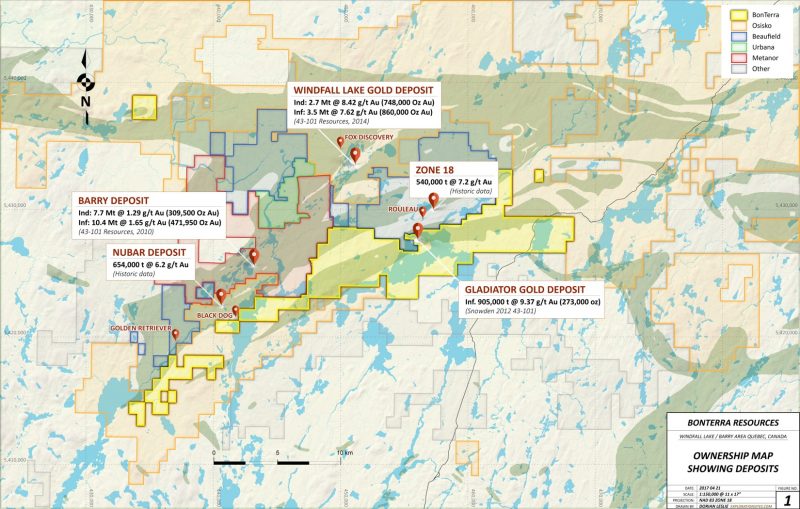
The Gladiator project has good neighbors with deep pockets and active projects on the go. In addition to good ground and neighbors, the company has a solid shareholder base with Eric Sprott holding 10%, Van Eck Gold Fund with 12% and Kirkland Lake Gold with 9.5%. The company has a cash position of $24,554,809 CAD as of its August 31, 2017 financials. The company has never been in a better cash position.
Ian Telfer once said that he invests in projects that have management who have an unshakable faith in their deposits. Bonterra has demonstrated this faith by weathering one of the longest bear markets for gold; not just weathering the storm, but advancing its project and growing the resource. With depressed gold prices, winter drilling to support share price and prove up the property, and an upcoming resource estimate due in mid-2018, right now presents an attractive entry point for investors to consider acquiring shares.
*Bonterra Resources Inc. is an advertiser with MiningFeeds.com. MiningFeeds was compensated for the creation and distribution of this article. MiningFeeds was paid a fee and does not hold any shares in Bonterra Resources. This is for informational purposes only and should not construed as investment advice.

Not every discovery becomes a mineral resource, not every mineral resource becomes a mine and not every mine turns a profit; mining is a tough business. It takes a keen eye for opportunity to identify troubled mining projects worth salvaging and then navigating a mining company to profit. It’s a talent that James Xiang has proven, which has led to his reputation as an astute and competent company builder — a reputation he hopes to build further with North American Lithium (NAL).
A native of China, James Xiang has been making his mark in Canadian and international business circles as an entrepreneur, investor and a mining leader since immigrating to Canada in 2001 to pursue his education while exploring new business opportunities. He has carved out a niche in the mining industry, supported by his ability to connect global investment partners with local leaders to drive successful projects.
His first foray into the mining industry was with a China based Nickel-Copper project, GobiMin, which he brought to Toronto for listing on the Toronto Stock Venture Exchange. After listing, he served as CFO in charge of all the public company matters, including reporting, investor relations, various financing and forming a team in Canada and coordinating with the Chinese team.
In less than one and half years, GobiMin grew its market cap by 10 times, with the projects generating solid production cash flow and expanding its resource base. During the financial crisis in 2008, almost every resource company saw their shares prices decline. GobiMin, however, was able to sell its main project to a Chinese company with significant capital gain, which proved Xiang’s unique strategy to leverage North American and Chinese markets.
James Xiang was also instrumental in the turnaround of Canadian Royalties Inc. in 2014. As the company’s BOD member and key leader, Xiang re-built the company’s senior management and corporate strategy, which ultimately led to a company turnaround that caught the attention of the market, especially Investissment Québec, which partnered with Xiang at NAL.
Xiang currently serves as Chief Executive Officer and Director of North American Lithium (NAL), a North American near-term lithium producer formerly owned by RB Energy. The company is aggressively working to bring its fully-permitted lithium mine in Val-d’Or, Quebec to commercial production. Xiang and management have implemented an operational turnaround at North American Lithium, having brought in lithium experts, re-engineered the project, permitted and remediated all legacy environmental issues. With this hard work, the company achieved a milestone last month as it began its first production of salable lithium concentrates.
We recently sat down with James Xiang to discuss the global market for lithium and how he and his team have progressed after two years of restructuring of North American Lithium.
Thanks for joining us, James. We’re curious about lithium mining and the current thinking around the lithium market. What has the investment climate been so far to help NAL achieve production at its lithium mine in Quebec?
James Xiang: I appreciate the opportunity to talk about a project that has excited many people – our management team, as well as our investment consortium. It’s hard not to be enthusiastic, given the trends pushing demand.
Lithium, as you know, is the lightest metal with the highest energy density, allowing it to supply efficiently the maximum amount of energy storage per kilogram of material. What does that mean? Well, it’s ideal for a variety of industrial uses, but is best known for its use in batteries, particularly those used to power cell phones and tablets and also implanted medical devices.
We all know the strong demand for these technologies, so it’s no surprise that lithium demand is on a steep upward curve, too. Some reports project annual consumption to double to ~300,000 metric tons in 2020 from 2012 levels. Demand is growing by 12 percent annually, surpassing availability by 25 percent. So you can see how we’re positioning ourselves for the trends, with ~$500 million invested so far to bring the mine back on line.
What stage has NAL reached in bringing commercial production online?
James Xiang: We have brought in some of the top names in the business and over the past two years we have been re-engineering, re-testing and devising solutions to some of the issues that marked past commissionings of the mine. For example, we’ve done a thorough audit of material handling practices, which revealed solutions specifically for cold-weather storage and handling issues. Our thoroughness has paid off. The mine is now in operation and the first production of salable lithium concentrate began this August. We are pushing the production to commercial level in the next few months.
Currently, you are mining spodumene to extract lithium but what about production of lithium carbonate?
James Xiang: That’s the next phase. Our back-end review of operations found flaws in the hydromet plant, leading us to undergo further studies on what a restart of the plant will take. Its complete re-engineering should be completed early next year, so that we will be able to move into production of lithium carbonate in 2019. Then we expect to ramp up to full capacity of some 23,000 tonnes of battery grade of lithium carbonate in long term.
Why will your NAL’s current team succeed now where others have fallen short?
James Xiang: Well, timing is important. Being able to achieve operational efficiencies is, too. Our team is all local, seasoned experts with track records of diagnosing project issues and fixing them, especially strong in the local Quebec environment. And having the right financing in place, and the confidence of our investors is crucial. On the first front, well, we talked about the supply/demand picture for lithium. Benchmark Minerals Intelligence estimates prices of lithium carbonate will average $13,000 a ton over the 2017-2020 period from around $9,000 a ton in 2015-2016.
We have brought our cost structure in line with other lithium producers, putting us on sound competitive footing. And our investors have seen that we have a compelling value proposition in our aim to be North America’s only near-term, vertically integrated lithium producer, made all the more compelling as we have delivered against all of our milestones.
Disclaimer:
These materials may contain inaccuracies or typographical errors. NAL is not responsible for any errors or omissions contained in these materials and do not guarantee the accuracy, completeness or timeliness of the information contained herein. This article contains certain statistical, market and industry data that was based upon information taken from industry publications and reports or was based on estimates derived from the same and management’s knowledge of, and experience in, the markets in which NAL operates. Actual outcomes may vary materially from those forecast in such reports or publications. NAL has not independently verified any of the data from third party sources referred to or ascertained the underlying assumptions relied upon by such sources.
Production estimates and timelines relating to the commissioning and start-up of the hydrometallurgical plant and hydromet plant are based on preliminary estimates provided by BBA Inc. and Hatch Engineering to NAL. There is no assurance that the estimated timelines and related milestones will be met as planned or at all.
MiningFeeds.com is being compensated by the subject of this article and the article is meant to serve informational purposes only, not investment advice and does not constitute a recommendation to buy or sell securities in North American Lithium.
MiningFeeds.com does not own any shares or have any financial interest in the company.
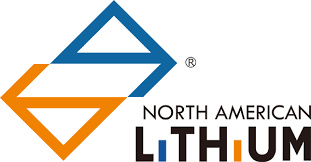
The future is sealed; batteries will rule the automotive industry as more and more countries outlaw combustion engines. Lithium (Li) is the lightest metal with the highest energy density, allowing the metal to supply the maximum charge per kilogram, which, in turn, makes it excellent for battery use.
Current global lithium production is not enough to meet future demand and with countries around the world increasingly shunning fossil fuels, demand for a secure supply of lithium will drive growth of lithium mining companies.
One company is already on its way to commercial production of lithium.
North American Lithium (NAL) acquired and is re-starting one of the only near-term viable hard rock lithium operations globally. North American Lithium is the 100-per-cent owner of the Québec Lithium Mine in Val-d’Or, Quebec, a mine site located within reach of North America’s largest markets and export terminals.
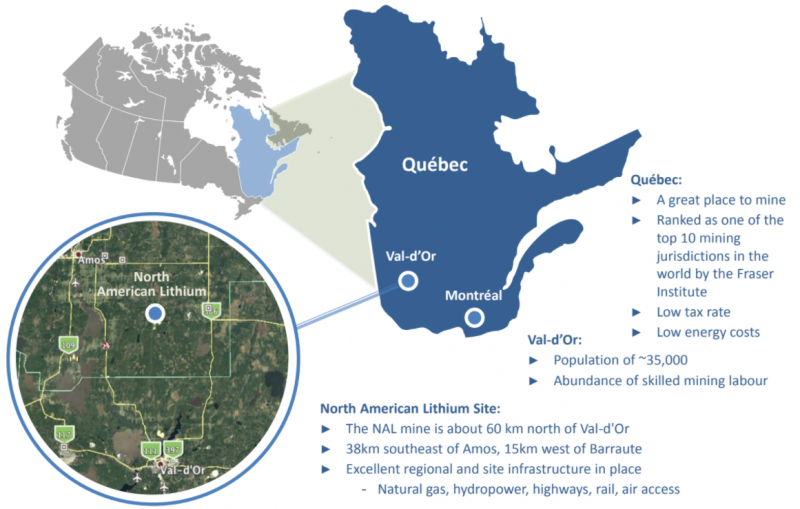
According to the 2016 Fraser Institute Annual Survey Mining Jurisdictions, Québec ranks as one of the top 10 mining jurisdictions in the world, with a low tax rate, low energy costs and a mining friendly government. NAL’s mine is situated about 60 kilometres north of Val-D’Or, a city with a population of 35,000 residents that provides an abundance of skilled mining labor for the region. The site also happens to be serviced by excellent regional and site-based infrastructure with access to natural gas, hydropower, highways, rail, and air. With security of supply a top priority for technology companies, businesses that require lithium will want to source their supply from safe and stable jurisdictions.
NAL’s lithium project is a past-producing mine with approximately $500 million already spent on the development of the property. Previous companies completed the necessary work to advance the project to the brink of commissioning. In addition, over $100 million has been invested by NAL shareholders over the last two years, shortening the timeline to production for a junior mining company.
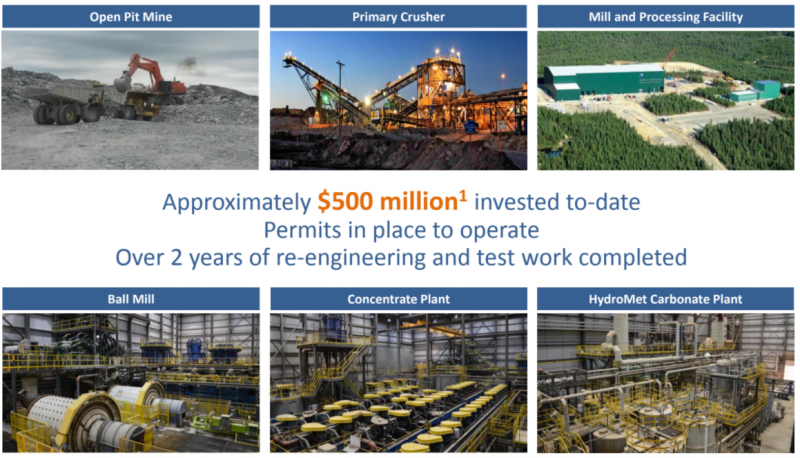
Previous work at NAL’s mine site revealed significant mineral resource estimates for a long operating life. As of May 2017, the company has measured resources of 13.5 Mt tonnes at 1.08 %Li2, indicated 25.8 Mt at 1.02 %Li2 for a total of measured and indicated of 39.3 Mt tonnes at 1.04 %Li2. Also as of May 2017, the site proved 11.9 Mt at 0.94 %Li2 and probable reserves of 8.9 Mt at 93 %Li2. Infill-drilling confirmed previous drilling data and the 2016 drill campaign shows potential to extend reserve life from material within current mining lease. Currently, the project is fully permitted, in possession of all permits/licenses to restart the mine, processing facility and tailings.
The amount of previous work, in addition to the size of the resource and the improved market demand for lithium prompted NAL to acquire the asset in 2016. NAL is a joint investment venture between Jien International Investments Ltd. and Investissement Québec. Jien has a successful track record in Québec, having invested $1.6 billion in Northern Québec nickel, copper and PGM producer Canadian Royalties Inc. (CRI). The company has strong relationships with China and other Asian markets with an experienced, Canadian-based operational, technical and finance team. Management has experience with turning around mines in Québec and a unique access to Chinese lithium converter markets.
NAL is led by Chief Executive Officer and Director, James Xiang. James Xiang has had a successful track record as an entrepreneur, investor and savvy rescue artist since immigrating to Canada in 2001. In 2005, Xiang began pursuing a career in the resource sector and successfully brought a China-based nickel-copper project, GobiMin Inc, to list on the TSX. In less than one and a half years, GobiMin’s market cap grew by 10 times. Under his management during the financial crisis of 2008, GobiMin was able to sell its main project to a Chinese firm in an all cash-deal which proved his ability to take advantage of both North American market and Chinese markets.
James Xiang was also instrumental in the turnaround of Canadian Royalties Inc. As the company’s CEO, Xiang re-built the company’s senior management and corporate strategy, which was work that ultimately led to a company turnabout that caught the attention of the market, especially Investissment Québec, which partnered with Xiang at NAL.
Future plans for the company include developing and completing the improvement of its existing lithium processing facilities, becoming a commercial producer of lithium carbonate, and looking for expansion and acquisition in Québec and globally.
If you would like to receive our free newsletter via email, simply enter your email address below & click subscribe.
CONNECT WITH US
Tweets
Tweet with hash tag #miningfeeds or @miningfeeds and your tweets will be displayed across this site.
MOST ACTIVE MINING STOCKS
Daily Gainers
 Lincoln Minerals Limited Lincoln Minerals Limited |
LML.AX | +125.00% |
      |
GCR.AX | +33.33% |
      |
CASA.V | +30.00% |
      |
AHN.AX | +22.22% |
      |
ADD.AX | +22.22% |
      |
AZM.V | +21.98% |
      |
NSE.V | +21.05% |
      |
DYG.V | +18.42% |
      |
AAZ.V | +18.18% |
      |
GLA.AX | +17.65% |

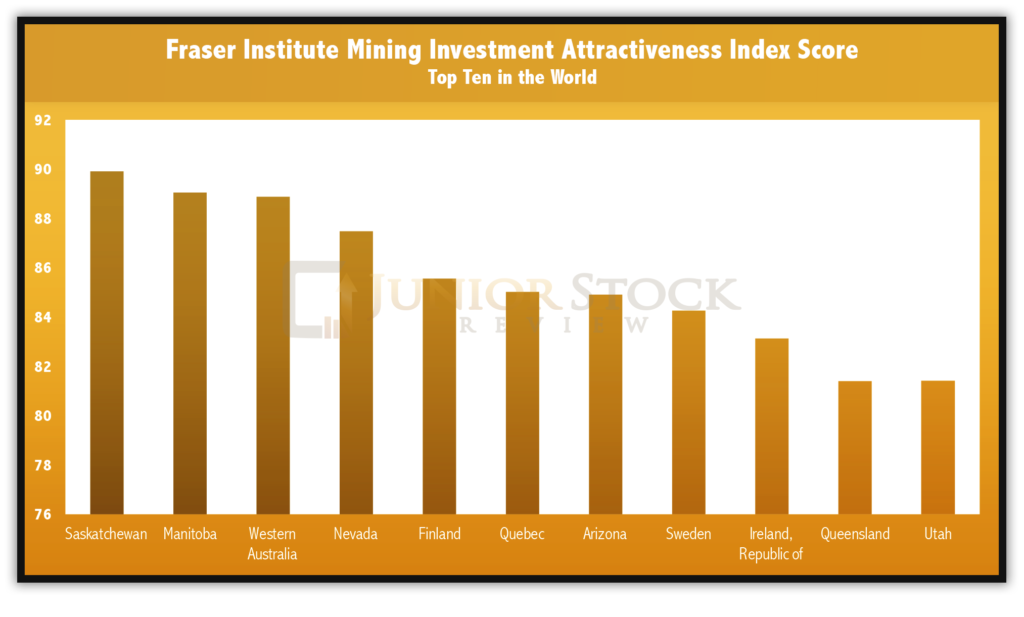

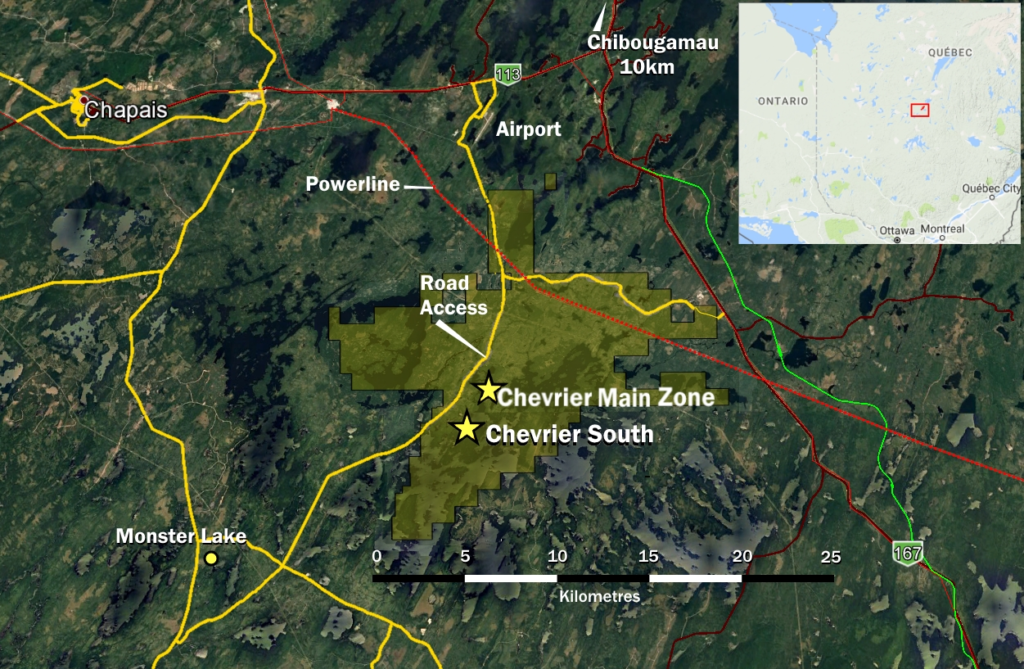
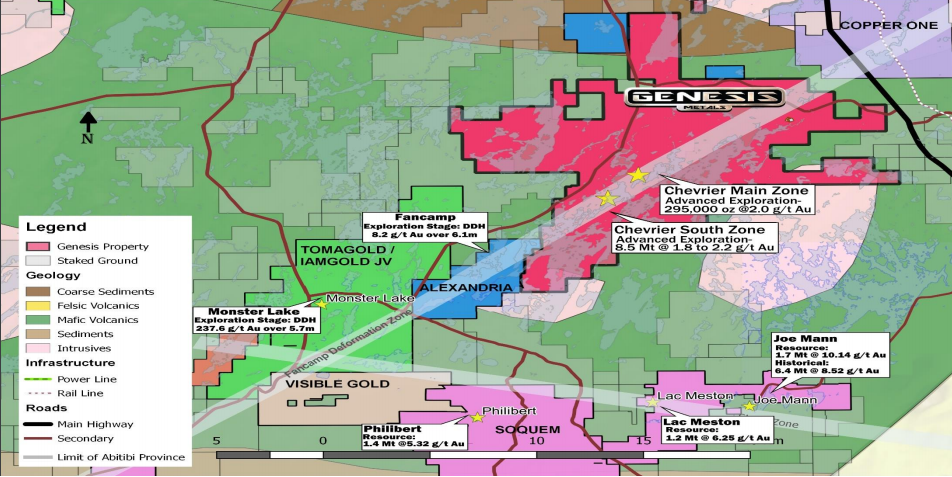
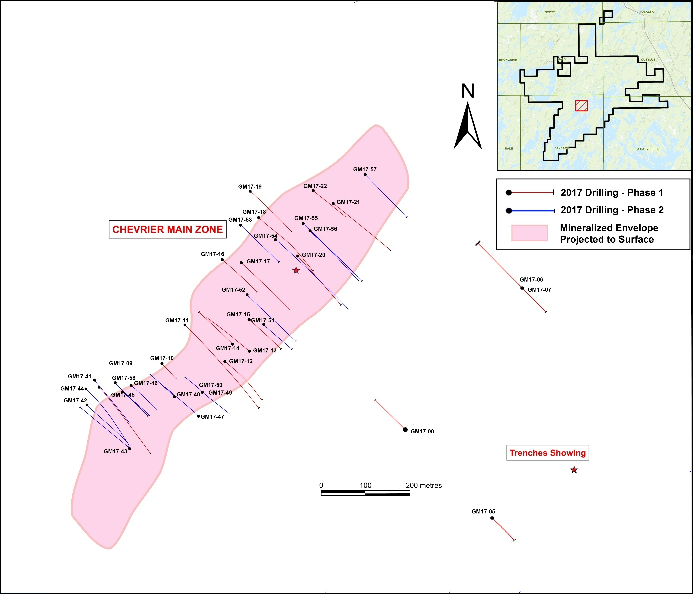

 Follow us on Twitter
Follow us on Twitter Become our facebook fan
Become our facebook fan







